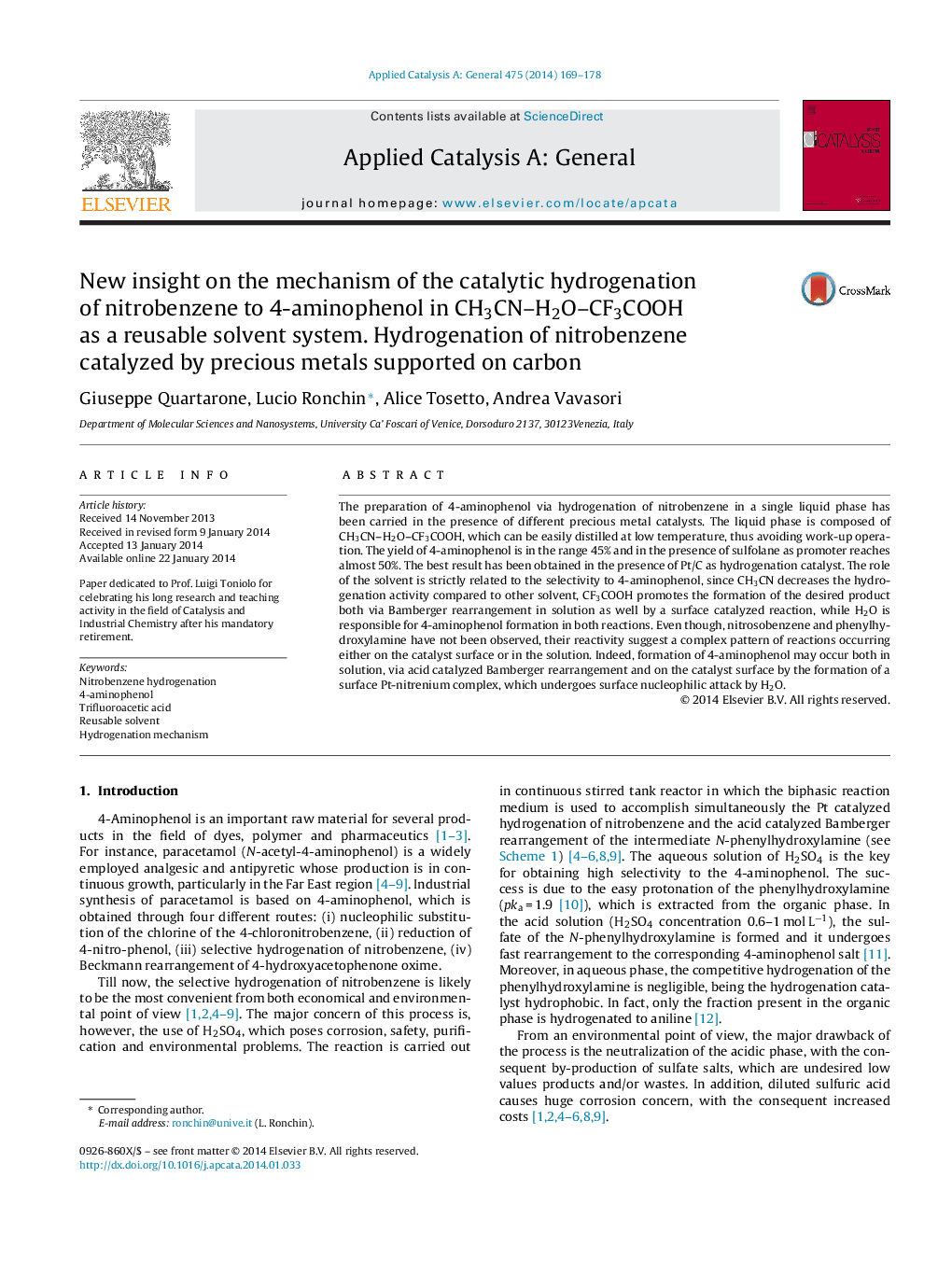| Article ID | Journal | Published Year | Pages | File Type |
|---|---|---|---|---|
| 39831 | Applied Catalysis A: General | 2014 | 10 Pages |
•Pt/C catalyzed nitrobenzene hydrogenation to 4-aminophenol in a single liquid phase.•CF3COOH–H2O–CH3CN easily reusable solvent acid system.•Activity and selectivity of several catalysts have been studied under different conditions.•Comparison of nitrobenzene, nitrosobenzene and phenylhydroxylamine reactivity.•On the base of reagent and intermediates reactivity a likely reaction path have been proposed.
The preparation of 4-aminophenol via hydrogenation of nitrobenzene in a single liquid phase has been carried in the presence of different precious metal catalysts. The liquid phase is composed of CH3CN–H2O–CF3COOH, which can be easily distilled at low temperature, thus avoiding work-up operation. The yield of 4-aminophenol is in the range 45% and in the presence of sulfolane as promoter reaches almost 50%. The best result has been obtained in the presence of Pt/C as hydrogenation catalyst. The role of the solvent is strictly related to the selectivity to 4-aminophenol, since CH3CN decreases the hydrogenation activity compared to other solvent, CF3COOH promotes the formation of the desired product both via Bamberger rearrangement in solution as well by a surface catalyzed reaction, while H2O is responsible for 4-aminophenol formation in both reactions. Even though, nitrosobenzene and phenylhydroxylamine have not been observed, their reactivity suggest a complex pattern of reactions occurring either on the catalyst surface or in the solution. Indeed, formation of 4-aminophenol may occur both in solution, via acid catalyzed Bamberger rearrangement and on the catalyst surface by the formation of a surface Pt-nitrenium complex, which undergoes surface nucleophilic attack by H2O.
Graphical abstractFigure optionsDownload full-size imageDownload high-quality image (92 K)Download as PowerPoint slide
